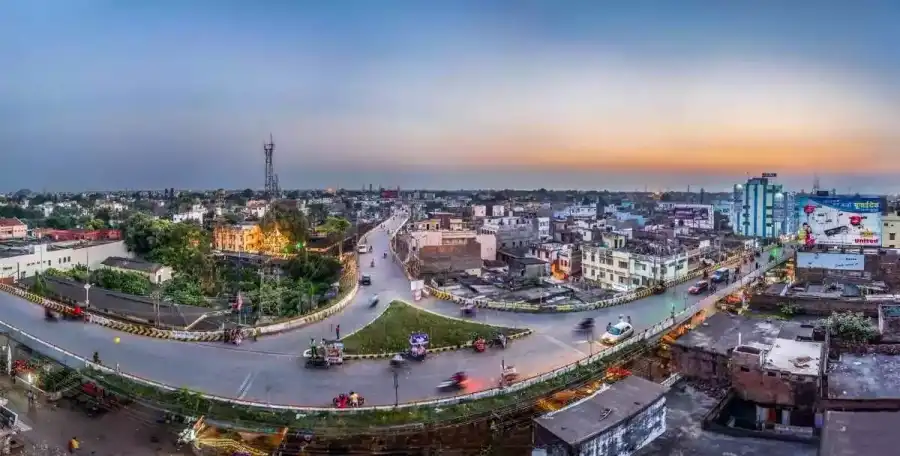Comprehensive Guide to Muzaffarpur District
Introduction
Muzaffarpur, a prominent district in the Indian state of Bihar, is renowned for its rich cultural heritage, diverse cuisine, and significant historical landmarks. This comprehensive guide delves into the various aspects of Muzaffarpur, offering a detailed overview of its demography, culture, geography, cuisine, history, notable poets and authors, and administrative structure.
Demography
Muzaffarpur district, as of the latest census, has a population of approximately 4.8 million people. The population density is about 1,504 persons per square kilometer. The district is characterized by a diverse demographic composition with various ethnic and religious communities coexisting harmoniously.
Population Composition
- Hindus: The majority of the population in Muzaffarpur is Hindu, accounting for about 86%.
- Muslims: Muslims make up around 14% of the population.
- Others: Small minorities of Sikhs, Christians, and Jains also reside in the district.
Language
Hindi is the official language spoken in Muzaffarpur, while Maithili, Bhojpuri, and Urdu are also widely used, reflecting the district's linguistic diversity.
Culture
Muzaffarpur boasts a vibrant cultural scene, deeply rooted in traditional arts, music, and festivals. The district's culture is a tapestry of influences from various communities, resulting in a unique blend of traditions and customs.
Festivals
- Chhath Puja: This is one of the most significant festivals celebrated in Muzaffarpur, dedicated to the Sun God and marked by elaborate rituals and offerings.
- Holi and Diwali: These major Hindu festivals are celebrated with great enthusiasm, involving vibrant processions, fireworks, and communal feasts.
- Eid: The Muslim community in Muzaffarpur celebrates Eid with traditional prayers, feasts, and community gatherings.
Traditional Arts
Muzaffarpur is known for its folk music and dance forms, such as Jhumar and Kajari, which are performed during festivals and special occasions. The district also has a rich tradition of handicrafts, including Madhubani painting and terracotta sculptures.
Geography
Located in the northern part of Bihar, Muzaffarpur covers an area of 3,172 square kilometers. The district is bordered by the districts of Sitamarhi and Vaishali to the north, Darbhanga to the east, and Saran and Gopalganj to the west.
Topography
The district's landscape is predominantly flat, with the Gandak and Burhi Gandak rivers flowing through it. These rivers play a crucial role in the region's agriculture, providing irrigation and sustaining the fertile plains.
Climate
Muzaffarpur experiences a humid subtropical climate with hot summers, a monsoon season, and mild winters. The average temperature ranges from 6°C in winter to 40°C in summer.
Cuisines
Muzaffarpur is famous for its delectable cuisine, characterized by a blend of traditional Bihari flavors and Mughal influences. The district is particularly renowned for its luscious litchis and traditional sweets.
Notable Dishes
- Litti Chokha: A staple Bihari dish consisting of roasted wheat balls filled with spiced gram flour, served with mashed vegetables.
- Anarsa: A sweet made from rice flour, jaggery, and ghee, often enjoyed during festivals.
- Sattu Paratha: A nutritious flatbread stuffed with roasted gram flour and spices, typically served with yogurt or pickle.
Litchis
Muzaffarpur is dubbed the "Litchi Kingdom" of India, producing some of the finest litchis in the country. The Shahi Litchi, a GI-tagged product from this region, is especially prized for its unique flavor and aroma.
History
Muzaffarpur's history dates back to ancient times, with its roots in the Mithila region, which was a center of learning and culture. The district has seen the rise and fall of various dynasties, including the Mauryas, Guptas, and Mughals.
Ancient and Medieval Periods
- Mauryan Empire: Muzaffarpur was part of the expansive Mauryan Empire, with notable figures like Emperor Ashoka influencing its early development.
- Gupta Empire: During the Gupta period, the district witnessed significant advancements in arts and sciences.
- Mughal Rule: The Mughals left an indelible mark on Muzaffarpur's architecture and culture, with several historical structures still standing as a testament to their legacy.
Colonial Era
Under British rule, Muzaffarpur became an important administrative and commercial hub. The district played a crucial role in the Indian independence movement, with many local leaders participating in the struggle.
Notable Poets and Authors
Muzaffarpur has been the birthplace and inspiration for several renowned poets and authors who have made significant contributions to Indian literature.
Ramdhari Singh Dinkar
A prominent Hindi poet, Ramdhari Singh Dinkar, hailed from Muzaffarpur. Known for his patriotic and nationalist themes, his works have left a lasting impact on modern Hindi literature.
Acharya Ramlochan Saran
An eminent scholar and writer, Acharya Ramlochan Saran contributed extensively to Hindi literature and education. His efforts in promoting the Hindi language are widely recognized.
Administration
The administrative structure of Muzaffarpur is well-organized, ensuring efficient governance and development.
Administrative Divisions
Muzaffarpur district is divided into several administrative units for better management:
- Subdivisions: There are 6 subdivisions - Muzaffarpur Sadar, East Muzaffarpur, West Muzaffarpur, Sakra, Kanti, and Kurhani.
- Blocks: The district comprises 16 blocks, including Bochaha, Gaighat, and Sahebganj.
Governance
The district administration is headed by the District Magistrate (DM), who oversees law and order, revenue collection, and the implementation of government schemes. Various departments under the DM's jurisdiction ensure smooth functioning across different sectors, including health, education, and infrastructure development.
Suggested Diagram: Administrative Structure of Muzaffarpur
Conclusion
Muzaffarpur is a district of significant historical importance and cultural richness. Its diverse population, rich cultural heritage, delectable cuisine, and strategic geographical location make it a unique and vibrant region. From its ancient roots to its modern-day significance, Muzaffarpur continues to be a vital part of Bihar's identity, offering a fascinating blend of tradition and progress.
